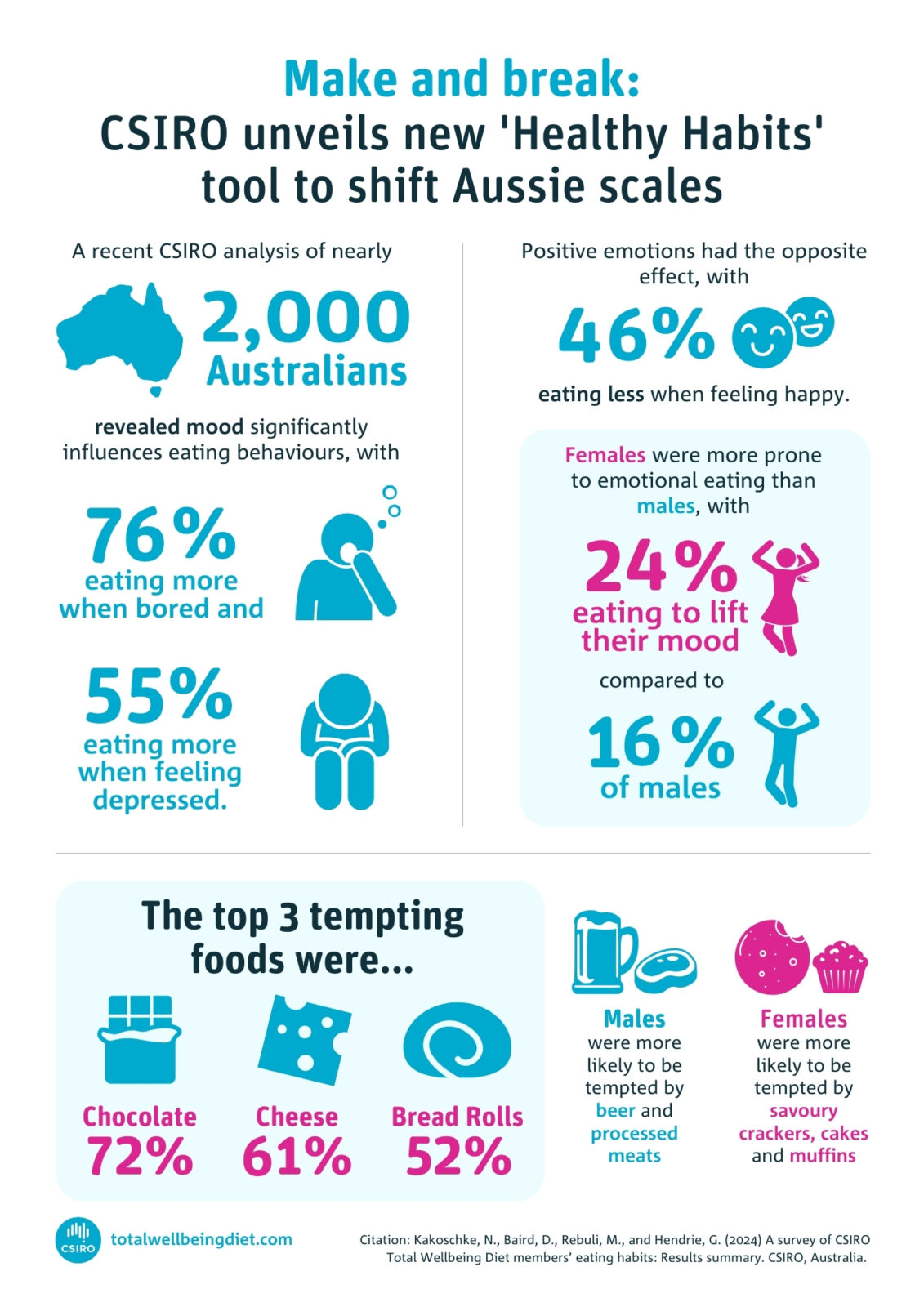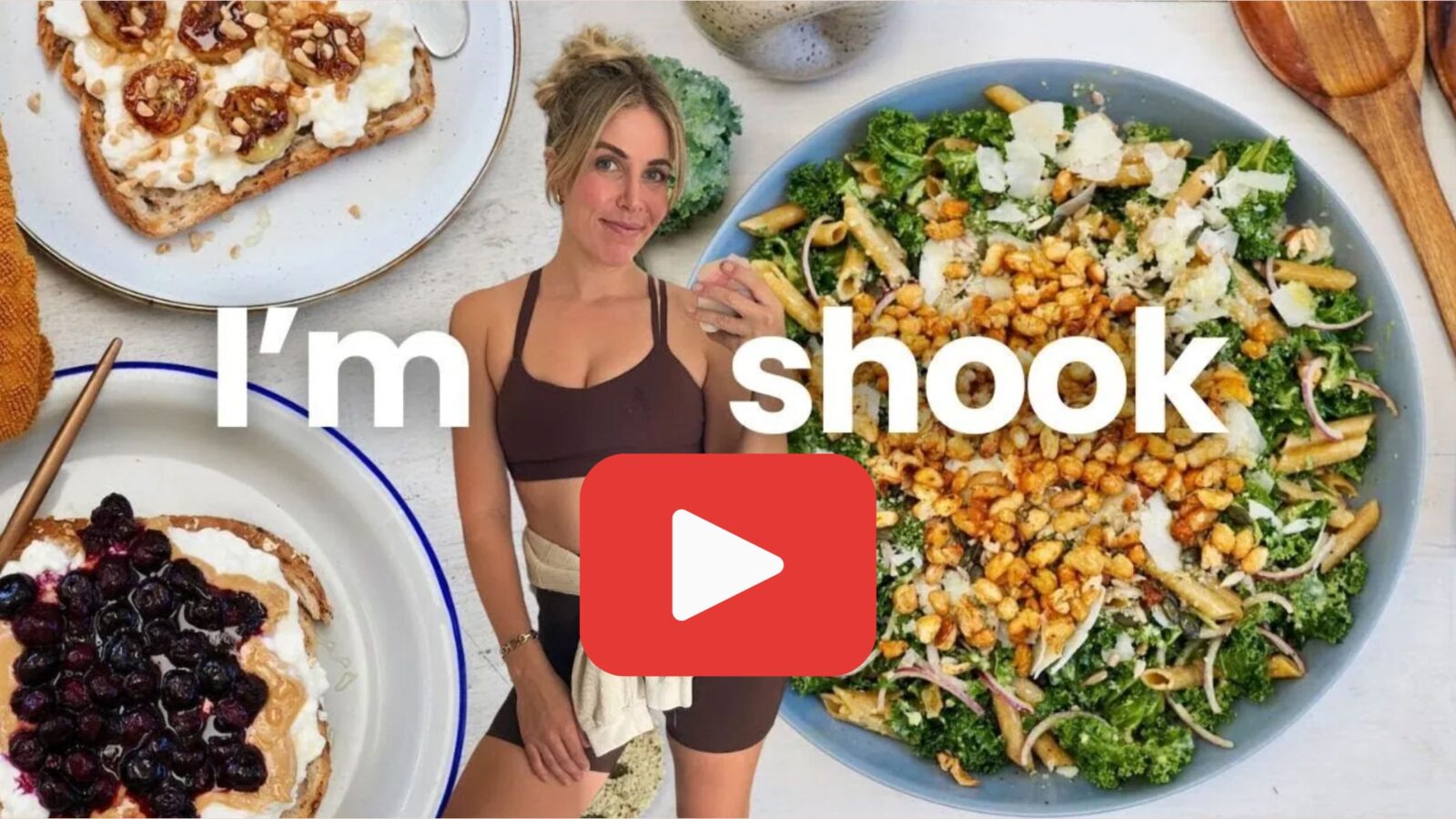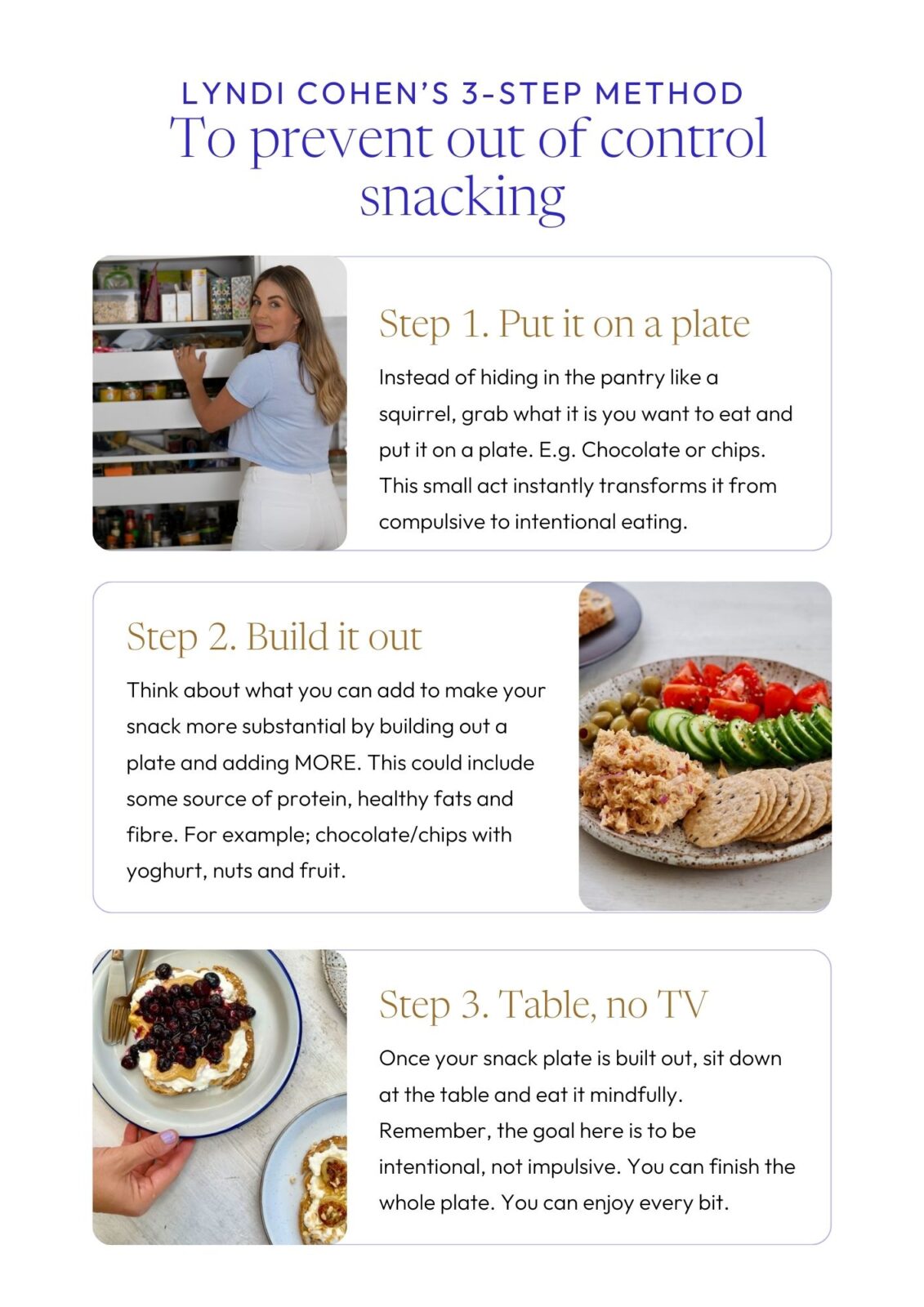If you’ve googled “how to stop emotional eating” only to find advice telling you to distract yourself by meditating on a rock, going on a walk or drinking a cup of tea – you, my friend, have come to the right place.
Don’t worry, the emotional eating tips you’ll learn by reading this blog are far better than the silly emotional eating solutions you’ve read before (that you really don’t feel like doing).
This blog is for you if you tick one (or more) of the following are your emotional eating triggers:
- You head straight for the box of cookies in your pantry after a long day at work
- As soon as you flick on the TV, the instinct to grab a snack switches on with it
- You reach for chocolate, ice-cream or leftover cake in the fridge as soon as you’re sad or bored
- When you’re home alone, you make 2748 trips to the kitchen for a little snacky snack
- You want to stop emotional eating BUT you also really enjoy it, in a weird it-makes-me-feel-better way
I get it. Because I was you.
I’m now a dietitian who has helped thousands of people overcome binge and emotional eating, but before then – I too was an emotional eater.
I’d eat peanut butter and Nutella straight out of the jar. Sit in my room watching Sex and City with a big spoon and a big bowl of cocopops (actually, lots of bowls!).
And if you’re reading this blog with guilt and shame after for eating more than planned, please know: you are not alone.
Here’s what we know: Managing cravings and emotions with food is very common.

Here’s what we also know:
Associating guilt and shame with food isn’t helpful. Relying on your willpower to stop emotional eating is not the solution either. But the biggest culprit of them all? Dieting and labeling the food you feel most out of control with as off-limits.
Let’s throw all this unhelpful information right where it belongs – in the trash. Along with those empty wrappers you’ve been hiding in your sock draw and under your bed.
Let’s start with the piggyback method
Unlike other blogs, I’m not going to tell you to just check if you’re hungry and then go for a walk to distract yourself. If you’re an emotional eater, you’re probably thinking, “Forget that—I know I’m not actually hungry, but I really want chocolate. So I’m having chocolate, not going for a walk.”
I get it. And while I do think meditation, journaling, walking, or calling a friend can be useful, I also know that these suggestions can feel pretty tough to stick with on their own to begin with.
So, let’s try something different: the piggyback method.
If you’ve ever been told to “meditate on a rock” instead of emotionally eating and thought, “No way, that’s the last thing I want to do,” here’s another approach:
Go ahead and eat that chocolate. Yep, you have my permission. But here’s the twist: after you’ve had your emotional treat, do a new healthy habit straight after.
For instance, you might enjoy your chocolate while watching TV, and then follow it up with a quick 10-minute walk, which we both know is great for your mental health. Or, you could write in your journal, call a friend, or read a chapter of a book.
Emotional eating and stress go hand in hand. But by piggybacking this new habit onto your emotional eating, you’re easing into healthier habits without completely changing your routine all at once. We know boredom, stress, sadness and loneliness are some of the causes of emotional eating. Coping with emotional eating with a new approach will make it easier (eventually) to shift towards healthier habits first.

The 3-step method to prevent out-of-control snacking
Step 1: Put it on a plate
Let’s say you’re craving chocolate. Instead of hiding in the pantry like a squirrel, break a couple of squares and put it on a plate.
Simply doing this one thing, builds healthy eating habits and transforms it from being impulsive to intentional eating.
Step 2: Build it out
Now, I want you to ask yourself; “What can I add to make turn this into a substantial snack?”
Something that’s a very smart-person move is adding in more fibre onto our plates. Think fruits, veggies, legumes, nuts, seeds and wholegrains. And yes, this does mean more carbs – but remember, these are the fuel our body needs.
As an example, you could add a handful of berries, banana, sliced apple or orange. You could even add some roasted chickpeas to get in extra legumes, which we know are great news for our digestion and heart health.
Another smart thing to add to your plate is some healthy fats. This will help you feel more satisfied. It can be as simple as a handful of nuts and seeds (both of which are great sources of fibre and a little protein too).
This brings me onto the next element on your balanced snack plate- protein. Simply adding some yoghurt, cheese or nut butter can help you stay fuller for longer.
Step 3: Pop your lovely bum at the table
Before you roll your eyes, consider this: how often do you overeat while your food is on a plate at the table? Almost never. Most out-of-control eating happens when you’re snacking in the pantry. If you do just one thing from this book, make it eating at the table. You’ll see a big improvement.
And if you’re more focused on TV shows than on your food, it’s tough to practice mindful eating techniques. When hunger or cravings hit, pause your show, sit at the table, and eat. It’s tempting to snack in front of the TV, but that’s a sign of emotional eating. And finding better ways to cope is a smart-human move.

So, where do you go from here?
If you want to learn how to overcome emotional eating with an easy-to-follow approach that will help you regain control and wave goodbye to unhelpful food habits – Check out my Stop Struggling With Food Guide.

And if you’re looking for more guidance and support to stop binge eating, my Binge Free Academy is a great place to start.
Together, these resources can help you finally feel normal around food.